12 tech innovations music lovers don’t talk about any more

Cutting edge technology embraced by the music industry overnight can also become irrelevant overnight.
But the tech sector is not always fussed, arguing that failure only leads to better inventions.
Here are 12 tech advances that didn’t last the distance with music consumers.
(1) MySpace
Founded in 2003 in Beverly Hills, California, MySpace was the first of the great social media platforms.
Like those from around the world, it was quickly adopted by Australian musicians to reach youthful users who hit up friends and celebs via blogs, music, photos, videos and profiles.
It was the largest social networking site in the world from 2005 to 2008, turning over $800 million a year, until the suits at the Murdochs, and then Time magazine, took over ownership.
Five years ago MySpace still had 1 billion registered users (active and non-active) and 50.6 million monthly visitors in the US.
But despite desperate designs (described famously by a former executive as “massive spaghetti-ball mess”) and a failed attempt at buying Spotify, the music world and the influencers moved on and MySpace had to change its Tinder detail to “irrelevant”.
What Shit Happened?: Facebook and its superior user experience focus which widened its initial 18-to-24 group (mostly college students) following to older users.
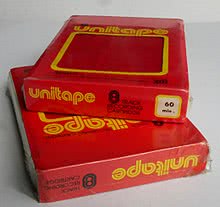
(2) Eight-Track Cartridge
The magnetic tape sound-recording technology was popular from the mid-1960s to early 1980s.
The eight track cartridge was most embraced by car & truck drivers (and van driving surfers), and consumers wanting to shift tapes between their homes and portable systems.
It was portable and convenient, and the format offered the largest array of pre-recorded titles.
What Shit Happened?: The compact cassette took over in the late ‘70s. Europe and Latin America started phasing it out, and the US axed it in late 1982.
(3) LaserDisc
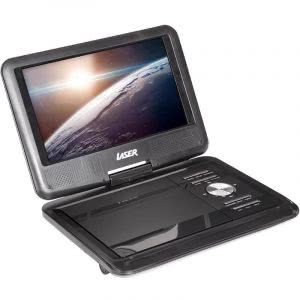
The LaserDisc gained a lot of interest on its arrival in 1978 as the first format of optical video storage.
It offered higher quality video than VHS and Betamax, with technology that was later used in CD, DCD and Blu-ray.
What Shit Happened?: the high cost of the players meant it never expanded out of a niche cashed-up audiophile market.
The love ended in 2001 after worldwide sales of 16.8 million players.
(4) Boomboxes
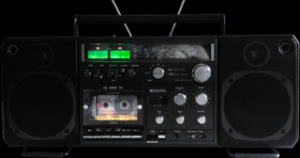
Boomboxes were also known as jamboxes and ghettoblasters.
These portables had one major aim when they emerged in the tail end of the ‘70s.
That is, they were to be played at the loudest volume possible and quickly considered a cool symbol in Australian and US ghettos.
The boomboxes were actually invented in 1966 by audio compact cassette inventor Philips of the Netherlands and known as radiorecorder.
The Japanese stormed the market four years later with cooler designs and advanced technology.
Boomboxes helping to popularise hip hop especially in its beginnings on the street.
Users could tape off radio; and the boxes’ double cassette meant strangers would approach each other, attracted by unknown tracks being played, and ask to make a tape.
The largest ones were the size of suitcases to accommodate bass booms – and of course, to drown out the other blasters as one sauntered down the street, perched on one’s shoulders.
What Shit Happened?: in the US they became condemned as symbol of the drug and violence culture of the hoods, and many cities began petitions to ban them.
Smaller devices like the Walkman were more convenient. In the US they sold 20.4 million units in 1986. By 2003, the figure skyfell to 329,000.
(5) MiniDisc Players
When MiniDiscs saw light of day in late 1992, they were a music fan’s dream.
The discs were one-third the size of CDs but held 80 minutes of digitised audio, they were protected by a plastic cartridge with sliding doors which was important for the storage system of teenagers (that is, spread out of their covers on the bedroom floor) and allowed users to make their own remixes.
Some audiophiles cry into their beers insisting the format was ahead of its time.
What Shit Happened?: the discs and the players were too expensive, and too few pre-recorded releases in the format.
By the 00s they were overtaken by MP3s and recordable CDs, and main manufacturer Sony pulled them from stores in March 2013.
(6) Transistor Radios
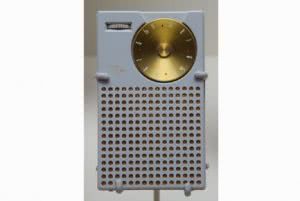
In the 1950s, the lingo of the “crazy generation” included “cruisin’ for a bruisin’”, “back seat bingo”, “up on cloud 9” and “cookin’ with gas”.
Into this world, in 1954, came the small portable and cheap transistor radio, which used transistors than vacuum tubes.
They allowed teenagers to be mobile with their music and “razzing their berries” by listening with friends or using the sole headphone outlet to tune in under the covers in the dark.
Transistor radios were best listened to pressed against the ear, not as some dimwit symbol of affection, but because the sound was so tinny.
Despite that, over the next few decades, they became the most popular electronic communication device, with billions sold between the 1950s and 2012.
Apple co-founder Steve Wozniack spoke or a generation when he drooled, “My first transistor radio… I loved what it could do, it brought me music, it opened my world up.”
Hundreds of songs name checked the device.
Their shapes reflected changing times, from spaceship and guns to peanuts because the US president of the time was a peanut farmer.
What Shit Happened?: from the 1980s came portable CD player, personal audio player and boomboxes which had better quality sound, while the smartphone delivered the deathblow.
(7) Zune
Portable media player Zune was Microsoft’s attempt to muscle the huge success of Apple’s iPod.
It ticked off every box possible to get things wrong.
It launched November 2006 five years after the iPod (Zune HD in 2011) with good audio quality, and long life battery but only lasted five years.
Even if its timing was off (which was the kiss of death for its target audience) it did nothing to draw consumers in with aggressive marketing or with innovative features that they might have wanted if it had bothered to ask.
Even worse, it became another word for “embarrassing”, made worse when it was sent up by those arbiters of cool including The Simpsons and Saturday Night Live.
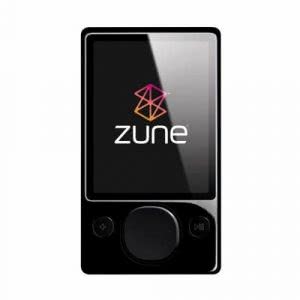
It had a number of bugs that were unforgivable to a brand-savvy consumer.
The best (or worst) was the bug problem that on December 31, 2008, virtually all 30GB Zunes ceased functioning because the underlying code had failed to account for the extra day in leap years.
Zune players were disconnected in 2011.
The Apple iPod itself went to the scrapyard in the sky in 20114.
What Shit Happened?: Robbie Bach, the former leader of Microsoft’s home entertainment and mobile business, explained:
“We just weren’t brave enough, honestly, and we ended up chasing Apple with a product that actually wasn’t a bad product, but it was still a chasing product, and there wasn’t a reason for somebody to say, oh, I have to go out and get that thing.”
(8) Napster
By the mid-1990s, music business conferences were predicting the coming of a new format, except no one was quite sure what it would be.
Some visionaries stretched their necks out and game-sensed it could be something that would bring it into a house like electricity or water.
19-year-old Boston university student Shawn Fanning, and fellow prodigious computer hacker Sean Parker worked out a simple program which helped music fans quickly find sites and index tracks.
By linking computers they allowed them to share their files.
In June 1999, they launched Napster, one of the most exciting changes in music for 30 years.
Within months, 150,000 signed on and Fanning was peering out from the cover of Time magazine.
Two years later it was 24.3 million and at its peak, 80 million.
There other later file-sharer apps like Gnutella, ScourExchange , eDonkey2000, and Freenet.
But it was the gloriously innovative Napster that proved to be the flashpoint for the new zeltergeist.

Napster
It embodied the promise of the internet – young, revolutionary, a free-flow of information, free speech and a disregard for rules and legalities that included copyright.
Earlier generations of music lovers had exchanged new music with friends by taping them on cassettes – illegal under Australian law – and exchanging them at school yards or home parties or at concert parking lots.
Napster just made it a swift and epic process.
The recorded music industry spent the next decades shoving the copyright infringing genie back into the bottle.
Artists were divided. Metallica and Dr Dre tried to shut it down saying they didn’t want their music exchanged for free.
Courtney Love sniffed it was record companies and their contract which were “the real pirates”.
It triggered changes that led to legal, moral and philosophical dilemmas still debated to this day.
The internet became a celestial jukebox which opened doors to new artists, introduced a new distribution and consumption model, shifted the power to consumers and creatives, and broke down genres.
On the other hand, people expected anything on the Net for free and the question of the value of music and of creativity.
What Shit Happened?: the recording music industry pounded it with lawsuits, and eventually it went into bankruptcy in June 2002.
Six months later after Roxio bought its assets and relaunched it as a subscription model.
By then the camel train had left the oasis.
(9) Motorola ROKR E1
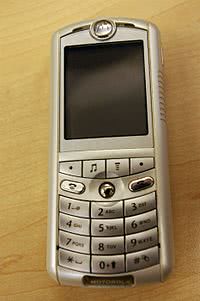
Apple’s first foray into turning the phone into an endless jukebox was a partnership with Motorola in 2005.
The ROKR E1 was the first to be integrated with Apple iTunes software, and came with a player that looked like Apple’s iPod.
The experiment ended in 2009.
What Shit Happened?: the software was slow to transfer, the storage capacity so small only 100 tracks could be loaded, the camera was crap and the design was plastic and cheap-looking.
Despite an expensive marketing campaign, buyers stayed away.
Apple leader Steve Jobs hated it and vowed never to issue a device under the Apple name which was developed by an outside third party.
(10) Quadrophonic Sound
With the album format on top of the game through the stereo sound, it made perfect sense to release them on something that doubled, the quadrophonic sound.
Arriving in 1971, early albums on the format (4.0 Surround in tech-speak) sounded superb, coming out from four speakers placed in each corner of a room.
Listen here:
But the format didn’t make it past the decade.
What Shit Happened?: the equipment was expensive and complicated, took up too much space, and there were so many ways to make the format, and no one thought to sit down with rivals to come up with one.
The Dolby Surround gave it the kiss of death, and music lovers stuck to stereo while film buffs went for the much advanced surround sound.
(11) Dynaflex
In the vinyl era, record companies would create new vinyl records by melting down old ones.
Consumers complained that this recycling was an “impure” approach which made the music “noisier” and they wanted the use of virgin vinyl.
In 1969, RCA Records hatched the Dynaflex, a lightweight record so flexible you could almost fold it in half.
RCA blew smoke that it wouldn’t scratch and lay so flat on the turntable that it wouldn’t jump.
It also helped that it helped its bank balance by using less material and besides, there was some rumbling about a global vinyl shortage coming.
In the early ‘70s, releases by its acts like David Bowie, Elvis Presley, Lou Reed, The Guess Who and Harry Nilsson were simultaneously issued on thick and ultra-slim vinyl format.
What Shit Happened?: Dynaflex didn’t eradicate scratches and bubbles as claimed, and consumers were loudly divided as to whether the quality was better (there was an issue about bass frequencies)
By 1974, RCA was releasing less records on the format, and by 1980 stopped completely.
Watch it here:

(12) Digital Audio Tape (DAT)
Sony created the portable audio market with the Walkman in 1979, and then beat Apple to the digital market by two years with DAT (Digital Audio Tape) in 1987.
It was the music fan’s dream: it had boss sound quality, lasted longer, could record music with high enhancement and capable of 16-bit sampling.
At the time, it was considered the super-format of the future.
What Shit Happened?: some record company honchos got scared that DAT’s capability of reproducing in high fidelity would lead to a jump in piracy..
In fact in the US they rushed to Congress and got laws passed to (a) provide fierce copy protection for the format; and (b) force DAT player retailers to pay them hefty royalties.
The recorded music industry shifted its focus on the CD, leaving DAT primarily to professional recording studios.
Alas, that consumers denied DAT meant the arrival of digital options as MP3s, which were more of a pirate’s paradise.
This article originally appeared on The Industry Observer, which is now part of The Music Network.






























